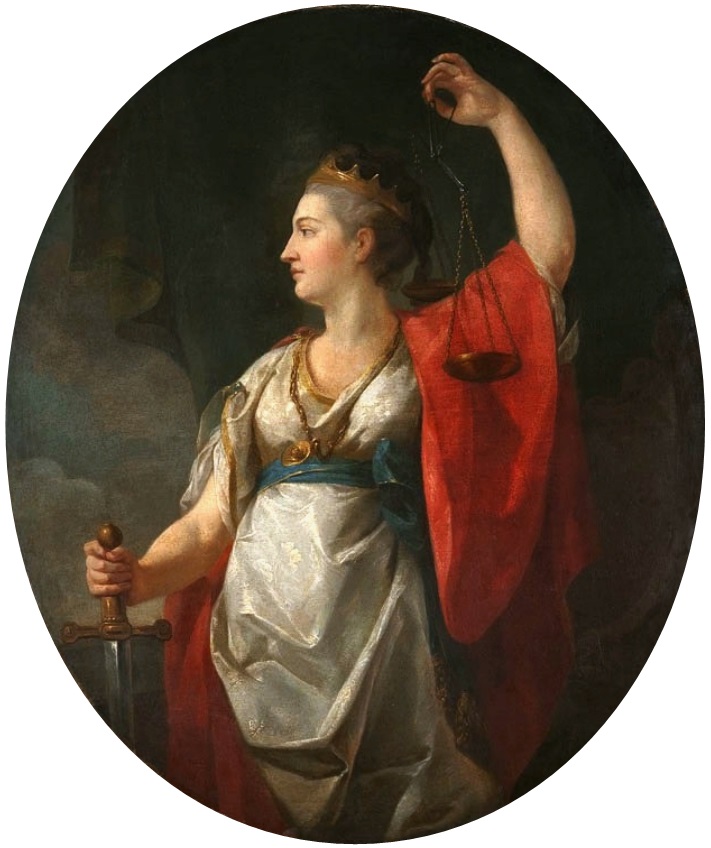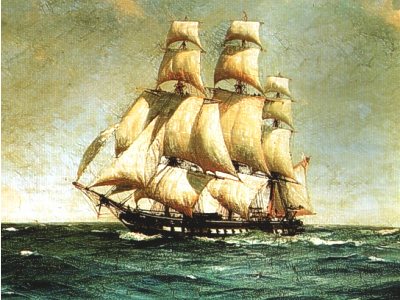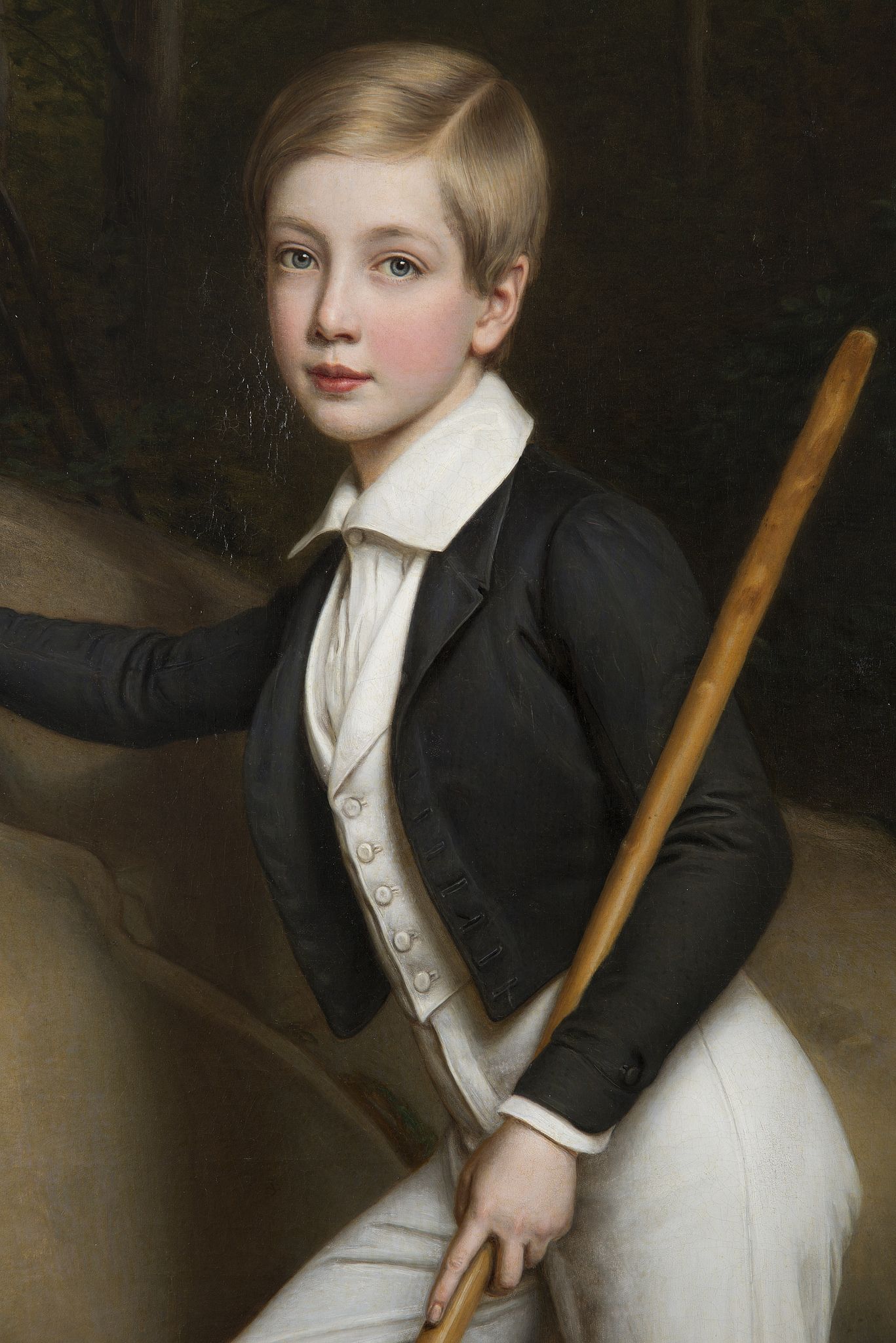|
French Frigate Thémis (1862)
The ''Thémis'' was a 46-gun ''Magicienne'' class frigate of the French Navy. The keel of ''Thémis'' was laid in 1847, but she took 15 years to complete: as her design would have been obsolete before completion, she was lengthened and fitted with a steam engine, and launched as a steam frigate. She took part in the French intervention in Mexico, and was one of the ships escorting the , carrying Emperor Maximilian to Mexico. From 29 July 1865 to the first of January 1866, she cruised the off Terre-Neuve under captain Amédée Ribourt. In 1874, she was redesigned as a first class cruiser, and in 1878, she became the flagship of the Southern Atlantic division. She later cruised the South China Sea, until she was decommissioned in 1882, and struck in November of that year. Until 1929, she was used as a mooring hulk in Toulon harbour. In 1930, she was sold for scrap, and eventually burnt off Lorient on 1 July 1931. Sources and references * Magicienne-class frigates 18 ... [...More Info...] [...Related Items...] OR: [Wikipedia] [Google] [Baidu] |
Civil And Naval Ensign Of France
{{disambiguation ...
Civil may refer to: *Civic virtue, or civility *Civil action, or lawsuit * Civil affairs *Civil and political rights *Civil disobedience *Civil engineering *Civil (journalism), a platform for independent journalism *Civilian, someone not a member of armed forces *Civil law (other), multiple meanings *Civil liberties *Civil religion *Civil service *Civil society *Civil war *Civil (surname) Civil is a surname. Notable people with the surname include: *Alan Civil (1929–1989), British horn player *François Civil (born 1989), French actor * Gabrielle Civil, American performance artist *Karen Civil (born 1984), American social media an ... [...More Info...] [...Related Items...] OR: [Wikipedia] [Google] [Baidu] |
Themis
In Greek mythology and religion, Themis (; grc, Θέμις, Themis, justice, law, custom) is one of the twelve Titan children of Gaia and Uranus, and the second wife of Zeus. She is the goddess and personification of justice, divine order, fairness, law, and custom, and her symbols include the Scales of Justice. She is also associated with oracles and prophecies, including the Oracle of Delphi. Name ''Themis'' means "divine law" rather than human ordinance, literally "that which is put in place", from the Greek verb ''títhēmi'' ( τίθημι), meaning "to put." To the ancient Greeks she was originally the organizer of the "communal affairs of humans, particularly assemblies." Moses Finley remarked of ''themis'', as the word was used by Homer in the 8th century BCE, to evoke the social order of the 10th- and 9th-century Greek Dark Ages: Finley adds, "There was ''themis''—custom, tradition, folk-ways, ''mores'', whatever we may call it, the enormous power of 'it is ( ... [...More Info...] [...Related Items...] OR: [Wikipedia] [Google] [Baidu] |
Magicienne Class Frigate (1861)
The ''Magicienne'' class was a class of twelve fifth rate 32-gun frigates of the French Navy, each with a main battery of 26 x 12-pounder long guns, and with 6 x 6-pounder guns on the quarterdeck and forecastle. They were designed by Joseph-Marie-Blaise Coulomb Joseph-Marie-Blaise Coulomb (Toulon, 5 July 1728 — La Seyne, 2 July 1803) was a French naval engineer. Born to the Coulomb family of shipbuilders, Joseph-Marie-Blaise Coulomb studied in Toulon and later in the shipbuilding school founded by Duham .... * ''Magicienne'' :Builder: Toulon :Ordered: 7 February 1777 :Begun: March 1777 :Launched: 1 August 1778 :Completed: October 1778 :Fate: captured by British Navy off Boston on 2 July 1781 and added to the British Navy. * ''Précieuse'' :Builder: Toulon :Ordered: 7 February 1777 :Begun: March (or August?) 1777 :Launched: 22 August 1778 :Completed: November 1778 :Fate: out of service in January 1804; broken up in July 1816. * ''Sérieuse'' :Builder: Toulon :Ordered ... [...More Info...] [...Related Items...] OR: [Wikipedia] [Google] [Baidu] |
Full-rigged Ship
A full-rigged ship or fully rigged ship is a sailing vessel's sail plan with three or more masts, all of them square-rigged. A full-rigged ship is said to have a ship rig or be ship-rigged. Such vessels also have each mast stepped in three segments: lower mast, top mast, and topgallant mast. Other large, multi-masted sailing vessels may be regarded as ships while lacking one of the elements of a full-rigged ship, e.g. having one or more masts support only a fore-and-aft sail or having a mast that only has two segments. Masts The masts of a full-rigged ship, from bow to stern, are: * Foremast, which is the second tallest mast * Mainmast, the tallest * Mizzenmast, the third tallest * Jiggermast, which may not be present but will be fourth tallest if so If the masts are of wood, each mast is in three or more pieces. They are (in order, from bottom up): * The lowest piece is called the ''mast'' or the ''lower''. * Topmast * Topgallant mast * Royal mast, if fitted On steel-ma ... [...More Info...] [...Related Items...] OR: [Wikipedia] [Google] [Baidu] |
French Navy
The French Navy (french: Marine nationale, lit=National Navy), informally , is the maritime arm of the French Armed Forces and one of the five military service branches of France. It is among the largest and most powerful naval forces in the world, ranking seventh in combined fleet tonnage and fifth in number of naval vessels. The French Navy is one of eight naval forces currently operating fixed-wing aircraft carriers,Along with the U.S., U.K., China, Russia, Italy, India and Spain with its flagship being the only nuclear-powered aircraft carrier outside the United States Navy, and one of two non-American vessels to use catapults to launch aircraft. Founded in the 17th century, the French Navy is one of the oldest navies still in continual service, with precursors dating back to the Middle Ages. It has taken part in key events in French history, including the Napoleonic Wars and both world wars, and played a critical role in establishing and securing the French ... [...More Info...] [...Related Items...] OR: [Wikipedia] [Google] [Baidu] |
Second French Intervention In Mexico
The Second French Intervention in Mexico ( es, Segunda intervención francesa en México), also known as the Second Franco-Mexican War (1861–1867), was an invasion of Mexico, launched in late 1862 by the Second French Empire, which hoped to replace the Mexican Republic with a monarchy favorable to French interests. After the administration of Mexican President Benito Juárez placed a moratorium on foreign debt payments in 1861, France, the United Kingdom, and Spain agreed to the Convention of London, a joint effort to ensure that debt repayments from Mexico would be forthcoming. On 8 December 1861, the three navies disembarked their troops at the port city of Veracruz, on the Gulf of Mexico. However, when the British discovered that France had an ulterior motive and unilaterally planned to seize Mexico, the United Kingdom separately negotiated an agreement with Mexico to settle the debt issues and withdrew from the country; Spain subsequently left as well. The resulting Fr ... [...More Info...] [...Related Items...] OR: [Wikipedia] [Google] [Baidu] |
Maximilian I Of Mexico
Maximilian I (german: Ferdinand Maximilian Josef Maria von Habsburg-Lothringen, link=no, es, Fernando Maximiliano José María de Habsburgo-Lorena, link=no; 6 July 1832 – 19 June 1867) was an Austrian archduke who reigned as the only Emperor of the Second Mexican Empire from 10 April 1864 until his execution on 19 June 1867. A member of the House of Habsburg-Lorraine, Maximilian was the younger brother of Emperor Franz Joseph I of Austria. He had a distinguished career as the Austrian viceroy of Lombardy–Venetia and the commander-in-chief of the Imperial Austrian Navy. His involvement in Mexico came about after France, together with Spain and the United Kingdom, had occupied the port of Veracruz in the winter of 1861 to pressure the Mexican government into settling its debts with the three powers after Mexico had announced a suspension on debt repayment earlier in the year; the Spanish and British both withdrew the following year after negotiating agreements with the M ... [...More Info...] [...Related Items...] OR: [Wikipedia] [Google] [Baidu] |
South China Sea
The South China Sea is a marginal sea of the Western Pacific Ocean. It is bounded in the north by the shores of South China (hence the name), in the west by the Indochinese Peninsula, in the east by the islands of Taiwan and northwestern Philippines (mainly Luzon, Mindoro and Palawan), and in the south by Borneo, eastern Sumatra and the Bangka Belitung Islands, encompassing an area of around . It communicates with the East China Sea via the Taiwan Strait, the Philippine Sea via the Luzon Strait, the Sulu Sea via the straits around Palawan (e.g. the Mindoro and Balabac Straits), the Strait of Malacca via the Singapore Strait, and the Java Sea via the Karimata and Bangka Straits. The Gulf of Thailand and the Gulf of Tonkin are also part of the South China Sea. The shallow waters south of the Riau Islands are also known as the Natuna Sea. The South China Sea is a region of tremendous economic and geostrategic importance. One-third of the world's maritime shipping p ... [...More Info...] [...Related Items...] OR: [Wikipedia] [Google] [Baidu] |
Hulk (ship Type)
A hulk is a ship that is afloat, but incapable of going to sea. Hulk may be used to describe a ship that has been launched but not completed, an abandoned wreck or shell, or to refer to an old ship that has had its rigging or internal equipment removed, retaining only its buoyant qualities. The word hulk also may be used as a verb: a ship is "hulked" to convert it to a hulk. The verb was also applied to crews of Royal Navy ships in dock, who were sent to the receiving ship for accommodation, or "hulked". Hulks have a variety of uses such as housing, prisons, salvage pontoons, gambling sites, naval training, or cargo storage. In the days of sail, many hulls served longer as hulks than they did as functional ships. Wooden ships were often hulked when the hull structure became too old and weak to withstand the stresses of sailing. More recently, ships have been hulked when they become obsolete or when they become uneconomical to operate. Sheer hulk A sheer hulk (or shear hulk) w ... [...More Info...] [...Related Items...] OR: [Wikipedia] [Google] [Baidu] |
Toulon
Toulon (, , ; oc, label=Provençal, Tolon , , ) is a city on the French Riviera and a large port on the Mediterranean coast, with a major naval base. Located in the Provence-Alpes-Côte d'Azur region, and the Provence province, Toulon is the prefecture of the Var department. The Commune of Toulon has a population of 176,198 people (2018), making it France's 13th-largest city. It is the centre of an urban unit with 580,281 inhabitants (2018), the ninth largest in France. Toulon is the third-largest French city on the Mediterranean coast after Marseille and Nice. Toulon is an important centre for naval construction, fishing, wine making, and the manufacture of aeronautical equipment, armaments, maps, paper, tobacco, printing, shoes, and electronic equipment. The military port of Toulon is the major naval centre on France's Mediterranean coast, home of the French aircraft carrier '' Charles de Gaulle'' and her battle group. The French Mediterranean Fleet is based in Toulon ... [...More Info...] [...Related Items...] OR: [Wikipedia] [Google] [Baidu] |
Lorient
Lorient (; ) is a town ('' commune'') and seaport in the Morbihan department of Brittany in western France. History Prehistory and classical antiquity Beginning around 3000 BC, settlements in the area of Lorient are attested by the presence of Megalith, megalithic architecture. Ruins of Roman roads (linking Vannes to Quimper and Port-Louis, Morbihan, Port-Louis to Carhaix) confirm Gallo-Roman presence. Founding In 1664, Jean-Baptiste Colbert founded the French East Indies Company. In June 1666, an Ordonnance, ordinance of Louis XIV of France, Louis XIV granted lands of Port-Louis, Morbihan, Port-Louis to the company, along with Faouédic on the other side of the roadstead. One of its directors, Denis Langlois, bought lands at the confluence of the Scorff and the Blavet rivers, and built slipways. At first, it only served as a subsidiary of Port-Louis, where offices and warehouses were located. The following years, the operation was almost abandoned, but in 1675, durin ... [...More Info...] [...Related Items...] OR: [Wikipedia] [Google] [Baidu] |








